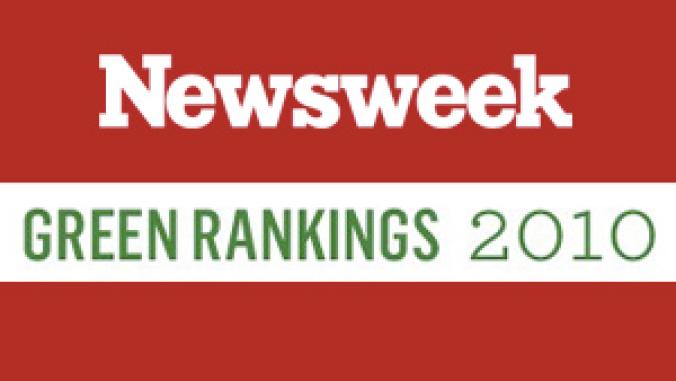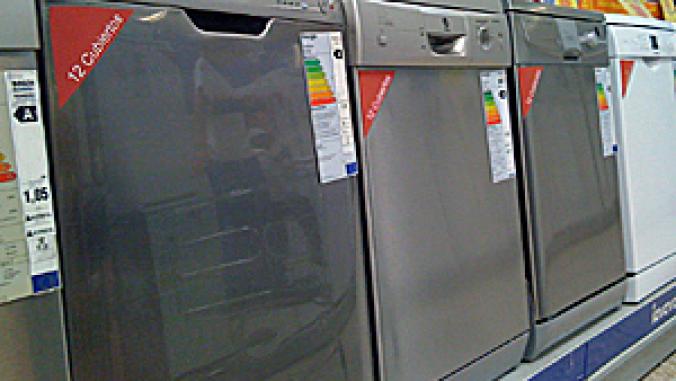3 Ways to Improve Your Retail Bottom Line with Sustainability
<p>Retailers can do many things to achieve quick wins in reducing their footprint, engaging employees and their organization in sustainability and demonstrating how sustainability can be used to improve financial performance. The big challenge for retail sustainability executives is getting buy-in to make those things happen. Here are tips on how to clear that hurdle.<br /> </p>

Last week the Retail Industry Leaders Association had their annual environmental sustainability conference in San Diego. The conference was excellent and there were some really great sessions from leading brands, retailers and service providers. We heard an update from Walmart and Best Buy on the progress of the Sustainability Consortium, and through presentations and individual conversations with attendees, learned about many of the challenges retailers are facing.
Nearly every retailer has begun doing something in terms of improving their sustainability. Generally, they include efforts around their store footprint and the built environment: reduce waste, energy, greenhouse gas emissions, etc … And while these early efforts should be commended, most activity to date is centered on large visions that will take five or 10 years before a verdict is in on their success.
There are many things retailers can do now that will lead to quick wins in terms of reducing their footprint, engaging employees and their organization in sustainability and demonstrating how sustainability can be used to improve financial performance.
One major challenge retail sustainability executives face is that they need to get buy-in from other parts of their organization in order to make anything happen. And in an increasingly competitive market, buy-in for sustainability activities will not occur unless you can show results that cut costs or increase revenue. As such, here are three ways to integrate sustainability for retailers that will not only improve environmental performance, but also financial performance.
1. Integrate Sustainability for Your Buyers
While a large part of a retailer's footprint is the built environment, arguably an even larger part is the millions of products they sell every day. So what better way to impact sustainability within the retail environment than to focus on the products that are going on store shelves? A key starting point is to identify just a few critical sustainability hotspots within product categories and educate the buyers about these sustainability issues so that they can talk to their vendors about them.
However, the key to integrating sustainability into the buying organization is not to solely tout the sustainability impacts this will have, as the results are likely to be largely intangible. Moreover, the buyers are already extremely preoccupied with reducing costs, improving quality, and ensuring availability. The key is to tie sustainability to the goals that buyers already have and to show how incorporating sustainability can actually help them achieve their goals. For instance, strategies such as packaging reductions or developing more concentrated product formulations can help reduce costs and staying on top of consumer risk factors like heavy metals in toys and jewelry, BPA in plastics or melamine in food can help reduce risk of lost category sales.
2. Communicate About Sustainability with Your Customers
Whether or not you believe that mainstream consumers are willing to buy green products, a large number of consumers do want the ability to learn more about the health of the products they buy and information about the companies they are buying them from. There are many ways to communicate the health, environmental or social responsibility performance of your company and the products you sell. With mobile technologies, like the GoodGuide iPhone app, it is now incredibly easy for consumers to access product information wherever they want in your store aisles, just by scanning the product barcode.
Why Talk to Consumers About Sustainability?
First, as I mentioned, consumers want to know. Forty percent of shoppers desire more green information at the store level according to the 2009 BBMG Conscious Consumer Report. The communication doesn't have to be limited to bricks and mortar retail either. In fact, it is far easier to communicate sustainability through online retail e-commerce sites. GoodGuide data shows that when consumers are presented with this type of information, conversion rates are several times higher than traditional e-commerce conversion rates. Perhaps more striking, when consumers have the ability to compare the health of products side-by-side, they are twice as likely to choose healthy products. Incidentally, these products have higher prices and lead to greater margins for retailers.
3. Improve the Performance of Private Label Brands
Private labels are becoming larger sources of revenue for most retailers. However, retail private label departments rarely have the resources that national brands do. Improving the health or environmental performance of private label brands and communicating these improvements to customers can change brand perceptions tremendously. Many consumers today see private labels as low cost, value brands. Retailers have an excellent opportunity to change public perception of their in-house brands to something more; while at the same time increase sales and margins for their brands. Many retailers are taking it a step further by creating entirely new brands, like Safeway's Bright Green.
One last comment about integrating sustainability. The one critical mistake many retailers (and manufacturers) are making is trying to develop something too complex over long time horizons, and as a result employees become frustrated and the sustainability department loses support within their organization.
I can't stress how important it is to keep things simple, efficient and engaging. If you are going to integrate with buyers, don't propose spending millions of dollars building another IT system that will take years to develop and create one more complex system employees have to learn.
Start small -- identify a few product categories to pilot, work hand-in-hand with actual buyers to better understand what will be valuable and use a simple dashboard interface that provides them with just enough information to be dangerous. Your goal shouldn't be to make everyone in your organization a sustainability expert, but provide them with enough information to implement change and better achieve their own goals.
Joshua Saunders is the senior director of business development for GoodGuide.
Image CC licensed by Flickr user factured-fairytales.





